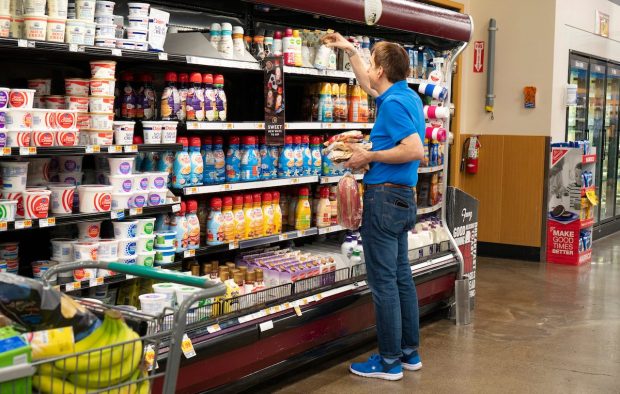Kroger Says Grocery Price Anxiety Threatens Digital Adoption

With food prices up 15% from last year, grocers need to work harder to secure consumers’ digital engagement, new insights show, as signs of another inflation-related behavioral shift begin to emerge.
In an interview with PYMNTS, Barbara Connors, vice president of commercial insights at 84.51°, the marketing insights subsidiary of grocery giant Kroger, shared how increasing cost-sensitivity affects adoption of eCommerce channels.
“We know that very price sensitive customers are those that have lower engagement with eCommerce and are lower on the adoption curve, and those are the customers that are most likely to go into a store,” Connors said. “And one of the reasons is because they are looking for sales, deals and coupons, and it is easier for them to do that in-store than online.”
Digital adoption is key to grocers’ ability to drive loyalty and spending in the long term, with each online purchase providing the merchant with more insight into how its customers behave, in turn enabling smarter targeting and more informed decisions down the line.
If deals are indeed consumers’ reason for choosing physical channels over digital, then relevant, easy-to-use digital coupons can go a long way toward directing shoppers to higher-value channels for the retailer. According to data from “Big Retail’s Innovation Mandate: Convenience and Personalization,” a PYMNTS and ACI Worldwide collaboration, which drew from a survey of more than 300 retailers, 74% of grocers included think that consumers would be very or extremely likely to switch merchants if digital coupons and rewards were not provided.
In addition to inflation affecting consumers’ channel preferences, it also has an impact on what they are buying.
“Historically, the reasons why someone may continue to be brand loyal just may not hold anymore because people are being forced due to financial constraints to make tradeoffs that they wouldn’t want to make,” Connors said.
Indeed, research from the October edition of the Consumer Inflation Sentiment study, “Consumer Inflation Sentiment: Consumers Buckle Down on Belt-Tightening,” for which PYMNTS surveyed more than 2,600 consumers in September, revealed that 37% of grocery shoppers reported purchasing lower quality products to reduce their expenses in the face of inflation.
This trade-down may be easier to prevent than reverse, as Connors explained that consumers often discover that they like the brand that they have traded down to as much as the one to which they were previously loyal. Consequently, a major promotion push now, even as prices rise, may make more sense than a long-term campaign to win back those customers down the line.
On top of channel shifts and product trade-down, consumers are also changing how much they buy in a single purchase. Specifically, basket size is polarizing, based on whether consumers have the financial safety net to stock up or whether they must watch their purchasing closely from week to week.
“When you look below those macro-level trends, you’re going to see a lot of different behaviors emerge because each customer has different needs and priorities,” Connors said.
